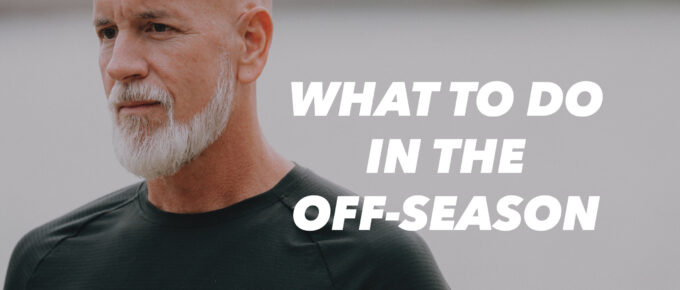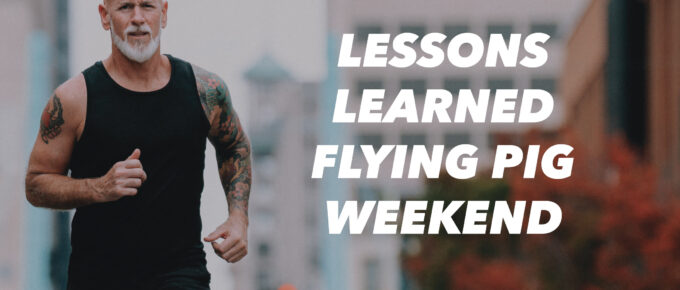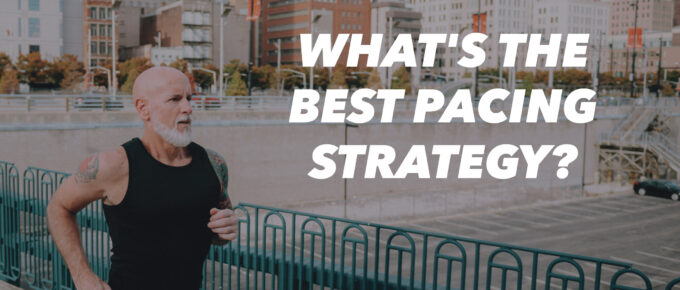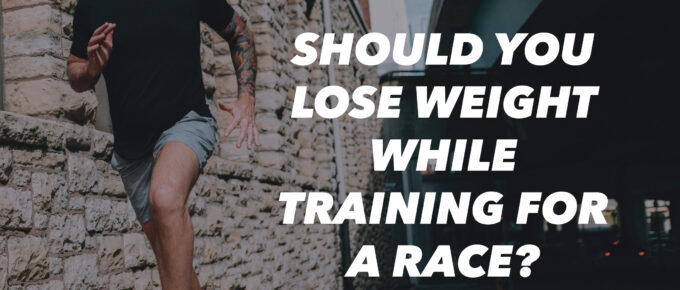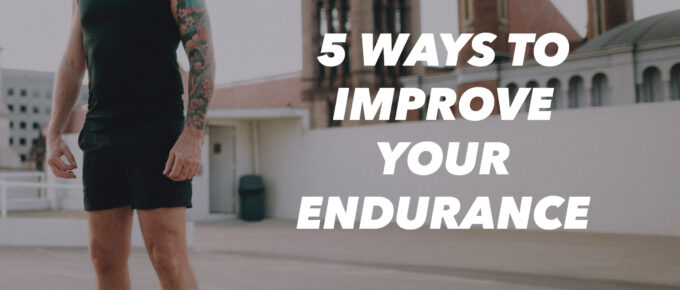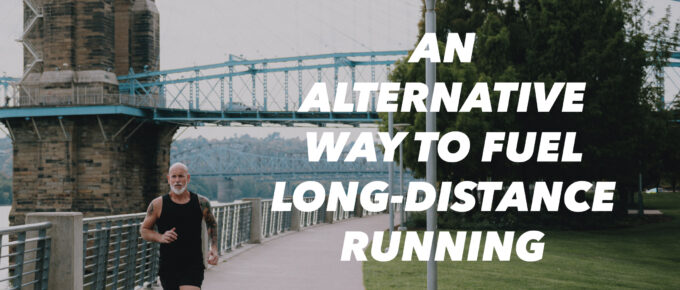For a lot of runners, the off-season can be a challenging time. You’ve finished your races, the next training cycle won't start for another 4-6 weeks, and you might feel like you’re in limbo until …
230. What to Do in the Off-Season
Podcast Transcript
My name is Patrick McGilvray, and I’m an experienced marathoner, ultra runner, Sports Nutritionist, Master Life Coach, and weight loss coach for runners. I’ve dedicated my life to helping runners just like you properly fuel your body and your mind. So you can get leaner, get stronger, run faster, and run longer than you ever thought possible. This is Running Lean.
Hey there, and welcome to episode 230 of Running Lean. My name is Patrick McGilvray, The Weight Loss Coach for Runners and today, what to do in the offseason. So for a lot of runners, the offseason can be sort of a challenging time.
So you finished your races and the next training cycle won’t start for another 4, 6, or 8 weeks, something like that. And you might feel like you’re kind of in limbo until then. Well, here’s the thing, the way you approach the offseason is just as important as the training season itself.
It’s so important that what you do in the offseason can often make or break your next race. So today, what to do in the offseason as a runner to ensure that you start your next training cycle on the right track.
And listen, if you’ve been thinking about improving your health, your fitness, getting stronger, improving your running, losing some weight, and you want some guidance and support to help you get there consider coaching.
The fact is coaching works where a lot of other methods fail, because it’s not about a particular diet, or some exercise routine. It’s about understanding what works for you, as an individual, you are an individual. And I’m here to treat you like an individual, I’m going to meet you where you are, and give you a plan that works for you, okay.
You have to learn how to do this stuff on your own. My job is to help you get there. I always tell my coaching clients that I want you to not need me at some point, you have to be able to do this on your own. So what good is making all these changes, like losing weight and changing your diet, if it isn’t sustainable for you, it has to be sustainable for you. It has to be easy, it has to be effortless. If it is then you will stick with it.
Okay, my job is to help you get there help you get to that place where you can stick with it. And you can do it on your own. So if you want to hit the easy button on your weight loss and your running goals, let’s work together we can get you there, just go to my website runningleancoaching.com and click on work with me. And I’ll show you exactly how to become the most badass version of yourself yet. Cool.
Okay, let’s talk about what to do in the offseason. So a lot of runners experience a little bit of a downturn in their fitness when it comes to the offseason, which is okay, it’s okay to have a little bit of a break. In fact, we want to take a break in the offseason, this is actually a good thing.
Racing season puts a lot of stress on your body, it also puts a lot of mental and emotional stress on you. So you need to take some time, a couple times a year to rest, to recharge, to repair, to recover, to refocus your energy. So the the main areas of focus that we’re going to be talking about today are going to be areas of running strength, nutrition, and then cross-training.
So I’m going to break each of these down so that you have some ideas on where you need to be in each of these different areas. And you can like kind of think about what your training season looks like, where you are in your training season. You might be listening to this. And it’s not, you know, you’re in the middle of your training season right now. But take some notes and then when your training season is over, then you can apply these for your offseason, whatever that happens to be for you right now.
It is May here in the US and like it is everywhere, right? But in the US here, we’re just done with our spring races. I know other parts of the world are just getting into their winter and maybe not doing a lot of racing right now.
But anyway, we are here done with our kind of spring racing calendar. And so we’re getting into the offseason because our marathon and half marathon training won’t start for another four to six weeks, something like that.
Okay, so for for us here we are in the midst of our offseason. And a lot of people are like what should I do? How much should I be running? You know, where do I need to put my focus? So let’s get into this. I’m just going to start with running. So once your races are over, your body is going to need a break.
You know training. Leading up to a race especially can be very stressful on your body. So you need that break, you need the time to recover and repair. And if you do multiple races each season, this is even more of a reason to take a break, because you’re putting a lot of stress on your body.
So you want to rest for sure, but you don’t want to lose too much fitness. And this is where I think a lot of people get hung up. Because they’re like, I don’t want to lose any fitness. Well, it’s okay to lose a little bit of your fitness, you want to always be peaking, right around race day, hopefully on race day.
And if you lose a little bit of fitness after that race, that’s fine, because you’re starting another training cycle here in a month or two. And you need a good maintenance plan that’s going to help you to maintain some of that fitness.
But you don’t need to maintain that peak fitness that you are experiencing on race day itself, it’s not actually good to do that you do want to take a break and give your body a chance to kind of repair and recover so that you can start your next training cycle feel refreshed and feeling amazing.
So you want to keep a steady schedule of running in the offseason, so that you can easily maintain some fitness. Okay, now for me, I’m taking about six to eight weeks off between training cycles. And it depends on what race is coming up next.
So for example, this year, I did the Flying Pig marathon and did all the races on that weekend. And that was the first weekend in May. And then my next race is going to be the Indianapolis monumental half. And it’s not until November.
So for me, I have a break of about eight weeks because my training isn’t going to start until you know halfway through June or so. So that gives me you know, almost eight weeks since the pig to kind of focus on some other things.
So what I’m doing right now is I’m maintaining my running, I run three days a week, this is what I do during my training cycles as well. So the number of days is not really changing for me at all, it’s not different at all.
The types of running I’m doing is a little bit different. So right after the race, and this is what I suggest you to do, too, if you’re running a half, right after a race, I would take about a week off. And I did that I took a week off after that weekend of racing.
And then I got back into some nice easy running. And if you’re just coming off a full marathon, you want to probably take two weeks off completely, you know, maybe do some walking, some run walking some cross-training. And we’ll get into cross-training here in just a minute. Some light recovery type of activities, but you don’t want to be running much you want to give your body a break.
So taking like two weeks off after a full is a great idea. But if you’re doing a half then taking a week off is typically fine for most people. And then I would ease back into running with some easy days and some low mileage.
You know, for me, I do anywhere from three to six miles for the first few weeks. And that’s kind of where I’m at right now. I’m up to maybe seven, eight miles on the weekends. But during the week I might do a three mile with I’m starting to build in a little bit of speed work here now, but three mile maybe a five miler, and then like a six to eight mile or on the weekend as like a long run.
But the intensity levels of these are pretty low. So I’m not killing it on these workouts. And that’s something that is important. You want to start increasing your mileage a little after the first couple of weeks of running. When I was doing two marathons a year, I always kept up at least a 10 miler on the weekends. And so I would build back up over the next few weeks into like a 10 mile or on the weekends.
And that way when training season started up, you know, when marathon training season started up again, I was ready, I was more than ready, because I’m used to running 10 miles on the weekend. So I always wanted to stay in those double digits as my long run on the weekends. Now, I’m not running a marathon this year, I’m doing a couple of halves. And my goal is to run a faster half in Indy in November. And so I’m going to keep my mileage a little bit on the lower side.
For now, you know, like eight miles is probably going to be as long as I’m going to go right now. And then as I get into the longer training runs and things like that, I’m going to, you know, have some longer runs in there, I might do some 13, 14, 15 mile runs, getting ready for this half, where I’m going to be trying to, you know, run a little bit of a faster half marathon and increasing my mileage and running longer than the race distance is a good way of ensuring that my fitness is where I want it to be.
I want race day to feel easy. And so our training has to reflect that you know, so for me it might be you know doing a couple of 15 miles and then race day is gonna feel like a breeze. At least that’s the plan. Okay?
Obviously, when you’re training for a marathon, you probably don’t want to do that you probably don’t want to run a 28 mile or something like that in your training just because it puts way too much stress on your body. But take a few weeks to ease back into running, don’t rush things.
Remember, our goal is to rest, recover, and rebuild. So your maintenance plan during the offseason should be pretty easy and comfortable. It should never be too stressful or too intense. But you do want to slowly build your mileage up so that when your training cycle starts again, you’re ready to go. And you’re feeling like 100%.
You know, we don’t want to be doing all this like super high intensity running in the offseason, because we that’s like the stuff we do in peak training. And we don’t want to be peaking in the offseason, we don’t want to be peaking three or four months, or even three or four weeks before a race we want to be peaking on race day.
And this is one of the reasons why we approach the year in cycles and training cycles of higher and lower intensities. And we want to peak on race day so that we are always you know, at our best on that race day. And that can be a couple of times a year, two, three times a year, four times a year, depending on how many races you’re, you’re doing okay, but ease back into running, take the next few weeks, and build slowly, make sure the intensity levels are low, but you want to maintain your running fitness.
So you don’t want to lose a whole lot of running fitness, you’re gonna lose a little bit and that’s okay. But we want to start the next training cycle feeling pretty fresh from a writing standpoint, the next area of focus is going to be strength. And this is where a lot of people don’t really do strength training year round, which I think is really not doing you a service.
So my philosophy on strength is that you should be doing it year round. Regardless of where you are in your training cycle. This is something you should be doing every week, two to three times a week, at a minimum, that you should be actively building strength all year long. All throughout your training cycle.
The only time I suggest really taking a break is the week of your race, you want to have that race itself, you want to be completely ready and fresh, you don’t want to be sore having done some tough strength workouts that week. You want to be as fresh as possible for that race.
But listen, I know a lot of runners don’t do this. If you’re somebody who’s not been doing strength training consistently. Okay, the offseason is a great time to get started, you can start a new strength program, you can get your body adapted to doing the exercises that maybe you’re not used to doing.
Because when you start a new strength program, there’s going to be a little bit of a period where you might be sore for a few weeks, especially at the beginning. This is normal, it goes away. So the offseason is a great time to get started and start building some good habits around strength training.
And if you’re somebody who’s been consistent with strength, the offseason is a good time to get a little more focus, get laser focused on some strength goals. So set some goals for yourself, like, you know by this date, I want to be able to lift X amount of weight for X number of reps, or whatever, maybe you want to do a one rep max or something like that.
But wouldn’t it be great to start the next training cycle physically stronger? Yes, it actually would make the next training cycle that much better. So use these six to eight weeks, whatever it is to build good habits around, intentionally building strength, you know, go a couple times a week to three times a week.
And you’re gonna see how much better you’re running is going to be right out of the gate when you start your next training cycle. It’s really a game changer for most people. If you’re not doing strength training regularly, then the offseason is a great time to get started with that. The other area that I wanted to talk about is nutrition.
So this is one that a lot of people struggle with. And I used to struggle with this. So during the offseason, I would just keep eating the same way I was eating during training. And I would always gain a lot of weight in the offseason because I was training for marathons, triathlons, ultra marathons, and I was doing a lot of training.
And I would not really change the way I was eating and I was eating garbage, all that I would just eat whatever I wanted tons of carbs, tons of sugar. And as soon as I would, you know run a race and that would be over it and I would really drop my mileage down.
My weekly training mileage and training intensity for sure. I would just keep eating like that and I would just gain a bunch of weight every year I did this and that’s not a good plan. Don’t do that. Okay, this is not what I’m suggesting that you do, this is like what not to do.
So first, you want to develop good eating patterns, and you just want to stick with them year-round like this is the most important thing I can tell you here today, which is that you should be eating the same pretty much year-round, the only things that really might change during training, and once you get into some higher mileage is going to be maybe you need more food, so you might need more energy coming in, so slightly more food, and then you might increase your carbohydrate intake, and time those carbs around long runs and high-intensity training sessions and races.
But that’s it, that’s the only thing that should really change slightly more foods, slightly more carbs. That’s it, you know, and other than that you should be eating like an athlete year-round, you know, because you are an athlete.
Now, if you’re a runner who wants to lose weight, the offseason is the perfect time to get started on a new nutrition plan, because you got like six to eight weeks to develop some good habits and make massive progress toward your weight loss goal. The offseason is really the best time to get started, you can really start any time, you probably don’t want to change your whole diet three weeks before your a race.
But the offseason is a great time to get started on a new nutrition regimen. For me, I’m not trying to lose weight right now. And I tend to eat the same thing all year long. I eat pretty low carb, I’m probably doing less than 50 grams a day most days. And I eat pretty high protein probably around 180 grams of protein most days.
I don’t really track this stuff. I was just looking up, you know, kind of some averages over the last couple of days. And that’s about where I am with those two numbers. And, and I feel really good doing that. The only times I really deviate is when my training really ramps up, I do tend to eat a little bit more food. But I just listen to my body.
And if I’m hungry or after long runs, I eat more. And I might add some fuel for particular workouts or races in the form of some slow burning carbs, I might eat some sweet potatoes or rice the night before a long training session or a race. And I might use some fuel during training. So it’s pretty minimal though it might be a couple 100 calories, and maybe 20 grams of carbs or something like that. So it’s pretty minimal.
I don’t use a lot of fuel for running for races because I just don’t need it. When you’re fat-adapted, you really don’t need much in the way of fuel. So it’s not a massive deviation from what I do day to day. And then the next day, I’m just back on my normal plan after I maybe do a little bit more carbs the night before a long run or a race and then some fuel during that event.
And then I just go back to eating normally.
The other thing to consider here is that if you’re somebody who’s eating a ton of carbs, like you’re on the traditional runner’s diet of just all the carbs all the time, then you’re naturally going to crave more and more carbs, because your body doesn’t really have the sensors to tell you that you’re full when you’re eating carbs.
So it’s very easy to overeat carbs. And when your training ramps up and you get hungry or you’re eating a ton more carbs, you tend to really overeat them. That’s what I was doing in the old days. And that’s why I used to gain a lot of weight.
If you try overeating protein and fat, you just can’t do it, your body sends signals to your brain that you’re full, you’re going to have to stop. And that just doesn’t happen when you’re eating massive amounts of carbohydrates. Okay, so what you eat does matter, all calories are not the same, you have to understand this.
Some calories in the form of sugar and carbohydrates affect your body profoundly differently than fats and proteins do. And when you’re eating a ton of carbohydrates, you tend to overeat them, you crave them all the time, you can’t get enough of them. And they tend to keep your body in that fat storing mode, you cannot burn fat, you cannot lose weight when you’re eating a ton of carbs like that. So just keep that in mind. Right.
So we keep the carbs low, we keep running, we increase our protein and that is a great plan for most people that works really well for most people. And it works really well for me and this has been working for me for many years now. And I feel great eating this way.
But I’ve gotten out of that habit of you know, eating tons of food during training because I’m not craving those kinds of foods I do eat a little bit more, but I’m eating more of the good stuff meaning more eggs, more steak, more broccoli, more chicken, whatever. And I tend not to over eat that stuff and I don’t tend to crave that stuff.
And I’m not just binging out on sugar, pizza and ice cream and all the stuff that I used to eat and I feel much much better. And so the biggest thing, one of the biggest suggestions I have for you here, is to try to keep your eating pretty normal all year long. Just kind of eat the same way. Yeah, it’s kind of boring. And it’s fine. Boring is good. All right.
And then the last area we want to focus on during offseason would be cross-training. So this is kind of the fun part of the offseason, at least it is for me anyway. Since running is such a huge focus during your training season. And when you get to the offseason running is not that big of focus.
So you can put your energy into other fun things, you know, biking, yoga, swimming, soccer, basketball, rowing, hiking, kayaking, climbing, trail running, I know it’s running, but you can just kind of do it very minimally and have some fun with it. Skating, golfing, dancing, whatever you want to do, do things that feel good and are fun for you.
Two of the things that I love doing are walking and hiking, so I walk every day, pretty much anyway. But during the offseason, I tend to walk more. And then I love hiking. So I’ll get out in nature and do some hikes. And it’s a great time of the year here for that because it’s the summer it’s warm outside, feels great, you can get on all these trails.
And it’s really fun if you can do these activities with a friend, because then you’ve got somebody else out there and you can have some social time. Cross-training is a great way to connect with nature connect with people to maintain fitness, and have fun doing it. And it just feels good.
And this really helps with the mental and emotional aspects of the offseason. Because a lot of times when we’re in the offseason, we can tend to get a little bit down and we feel like oh, I don’t have a purpose. I’m not training for something, you know, and we can kind of feel like we are rudderless ship, you know.
Instead, get out there and do some things with some other human beings connect with other people get out of your head a little bit and do some things that are fun and you’re exercising while you’re doing it.
Now, you don’t have to go out there and crush these workouts like if you want to go out there and do some hard workouts every now and then that’s fine, but that’s not the goal here. Remember, this is the offseason, we don’t want to be crushing every workout we want to rest repair, refocus. So have some fun with these kinds of activities. But you don’t necessarily need to be crushing them.
You know every now and then you can push it a little bit if you want to but just have fun with it and use it as a time to do some activities that feel good and it is a little bit of a workout. You know if you’re biking or something like that, but don’t don’t get too serious with it like have fun with it.
Okay, so that’s how I approach the offseason these are some good ideas for you and what to do in the offseason. If you have other suggestions, maybe I missed something maybe you can shoot me a message and and let me know what I missed. Okay, but that’s all I got for you today. Love you all. Keep on Running Lean and I will talk to you soon.

